(Translated from the post in Japanese on October 15, 2019)
Hello, this is Minew.
It’s quite cool around this time of the year, from summer to autumn, isn’t it?
Last year I wrote an article titled "Take insects in the summer!” And through the summer and until now this year, I have taken a lot of macro shots of many insects with the GR III. So I would like to share them with you here. (I apologize if you don't like insects!)
What I want you to know this time is how well images can look at higher magnification. You know the GR III’s macro performance has been improved, so you might want to know its limit. Then I will show you that you can get high-definition images even when they are cropped as long as it’s at the optically maximum magnification rate.
First of all, mantis- the inspect that I love. At the end of summer, their bodies grow and become more active. As I found one climbing the wall of a house, I approached and took a picture.
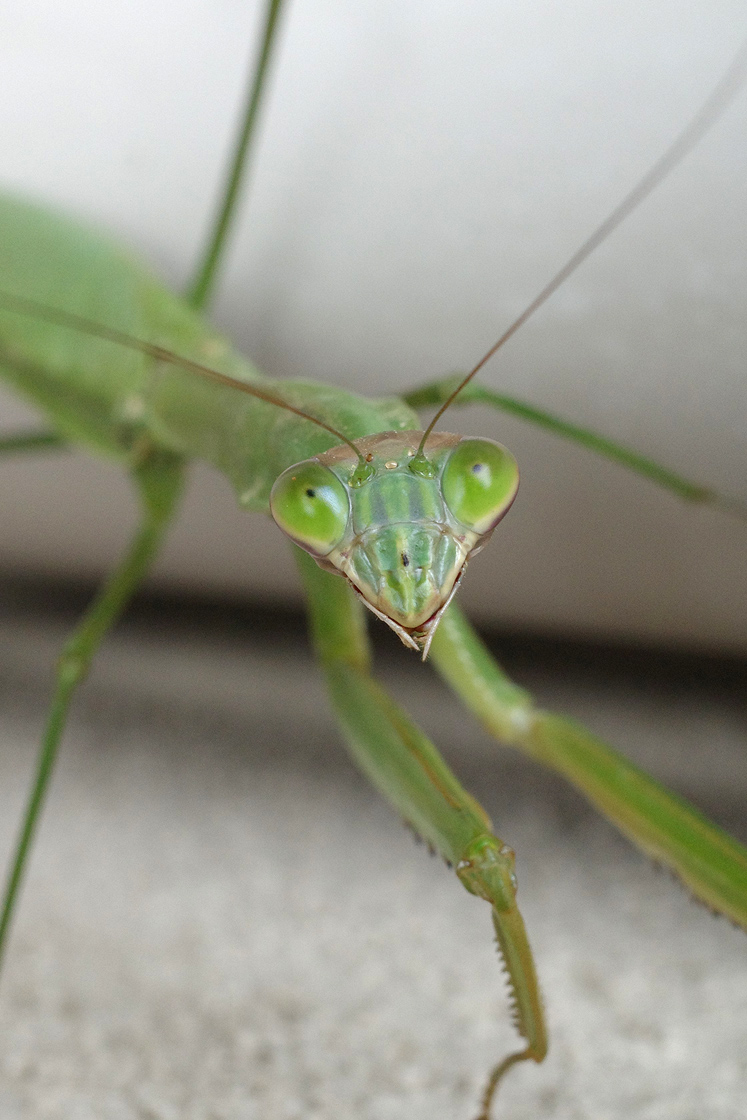
GR III, P mode, ISO800, 1/25sec, F6.3, Macro, Crop 50mm
In order to take as large a picture as possible, the focus position was set to "6cm minimum" and "Crop 50mm”. (When you set it to macro mode, the focus moves immediately to the shortest position of 6cm. It is convenient when you want to roughly measure the shortest distance.) (Click here for macro shooting setting reference.)
With 50mm crop, the recording size L, M, or S and the aspect ratio 3:2, the recorded image will be 3360 x 2240 pixels (2240 x 2240 pixels in 1:1 aspect ratio).
The whole body does not even fit into the image at this magnification rate, but let me make it look even larger by cropping the face part. Since the original image has a large number of pixels, there is little degradation in image quality even when enlarged. This is about 1000 pixels vertically and horizontally.
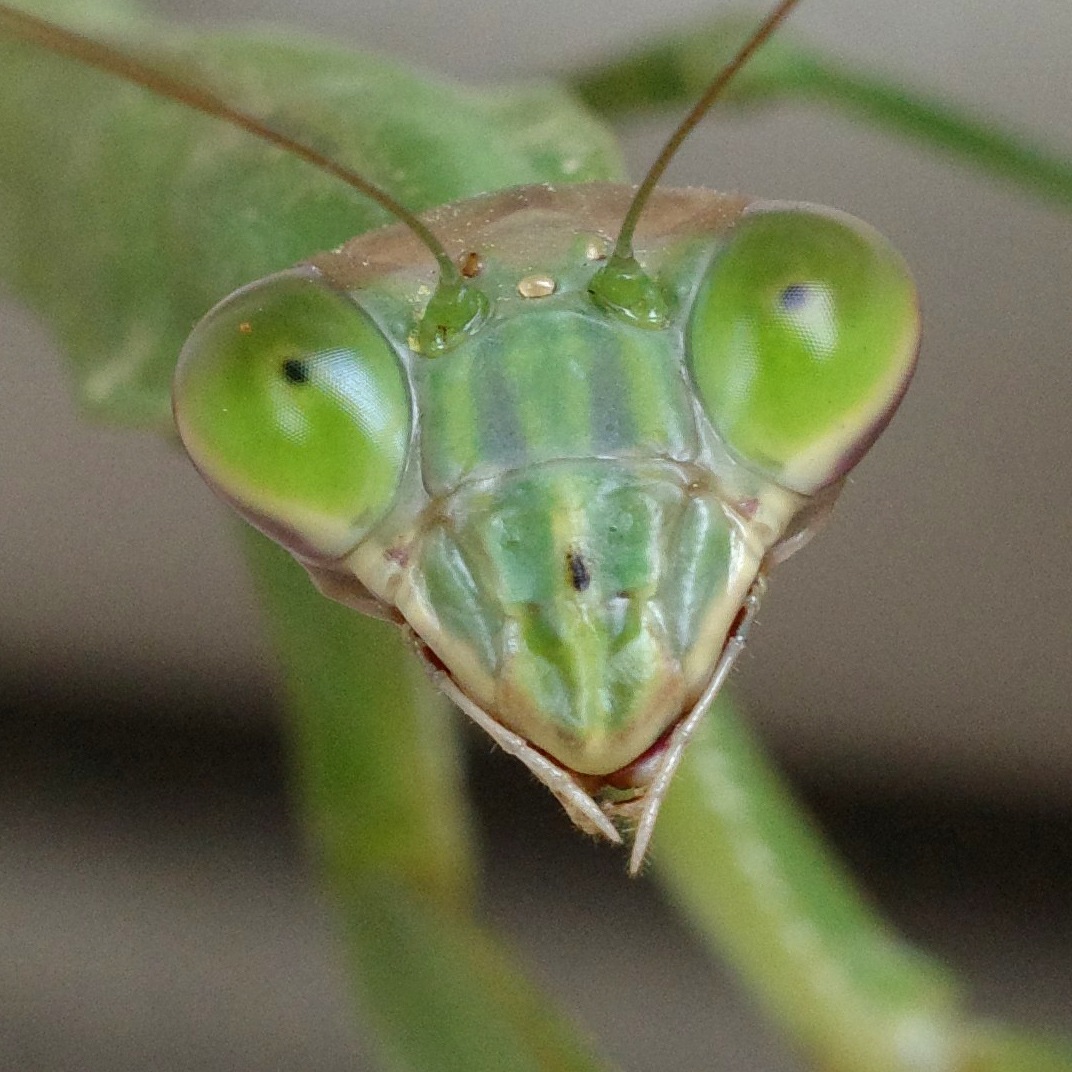
GR III, P mode, ISO800, 1/25sec, F6.3, Macro, Crop 50mm, Trimmed
You can see the details of the face staring. It's amazing. Looks like a microscope image.
Similarly, here is a cropped image of a dragonfly’s face taken at the maximum magnification rate. You can see the compound eyes covering the face, the bumps on their surface, and the hair.
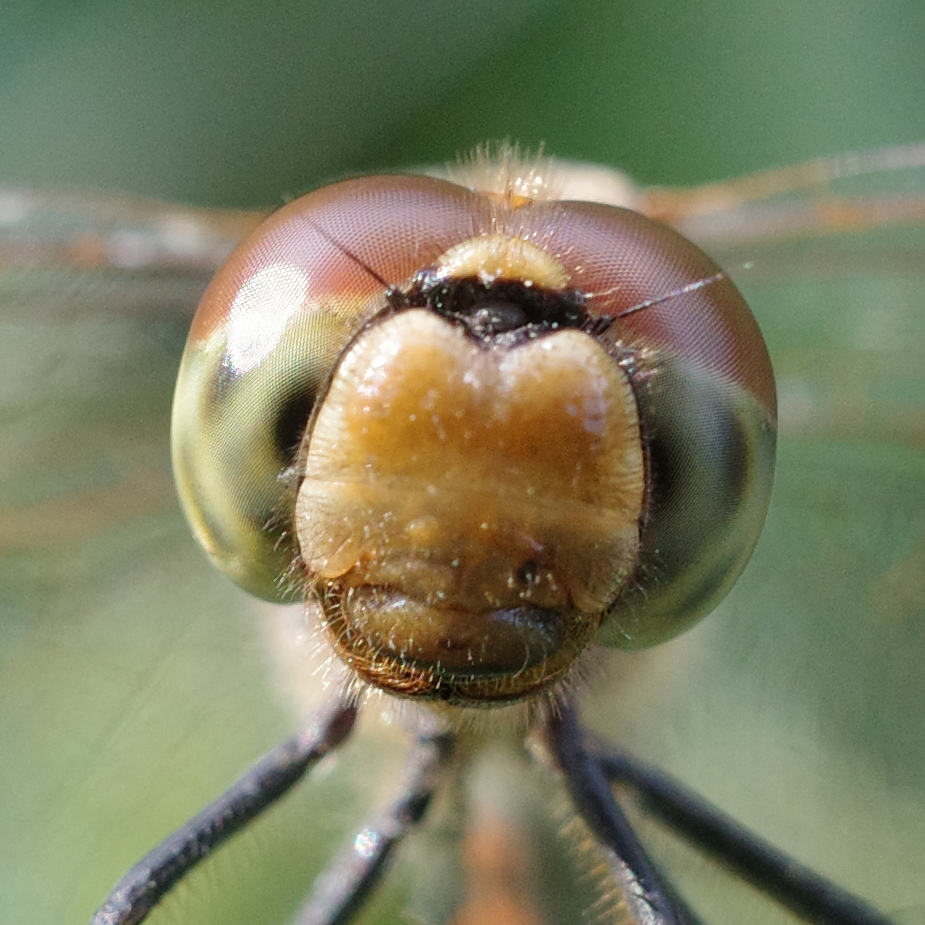
GR III, P mode, ISO800, 1/200sec, F5.0, Macro, Crop 50mm, Trimmed
Next is a jumping spider. It’s smaller than a pinky nail, but it has lovely round eyes (cute!). It was such a discovery for me. The mouth looks like a bearded grandpa’s. It is one of my personal barometers for macro performance to see how beautifully the lens can capture jumping spider's eyes.
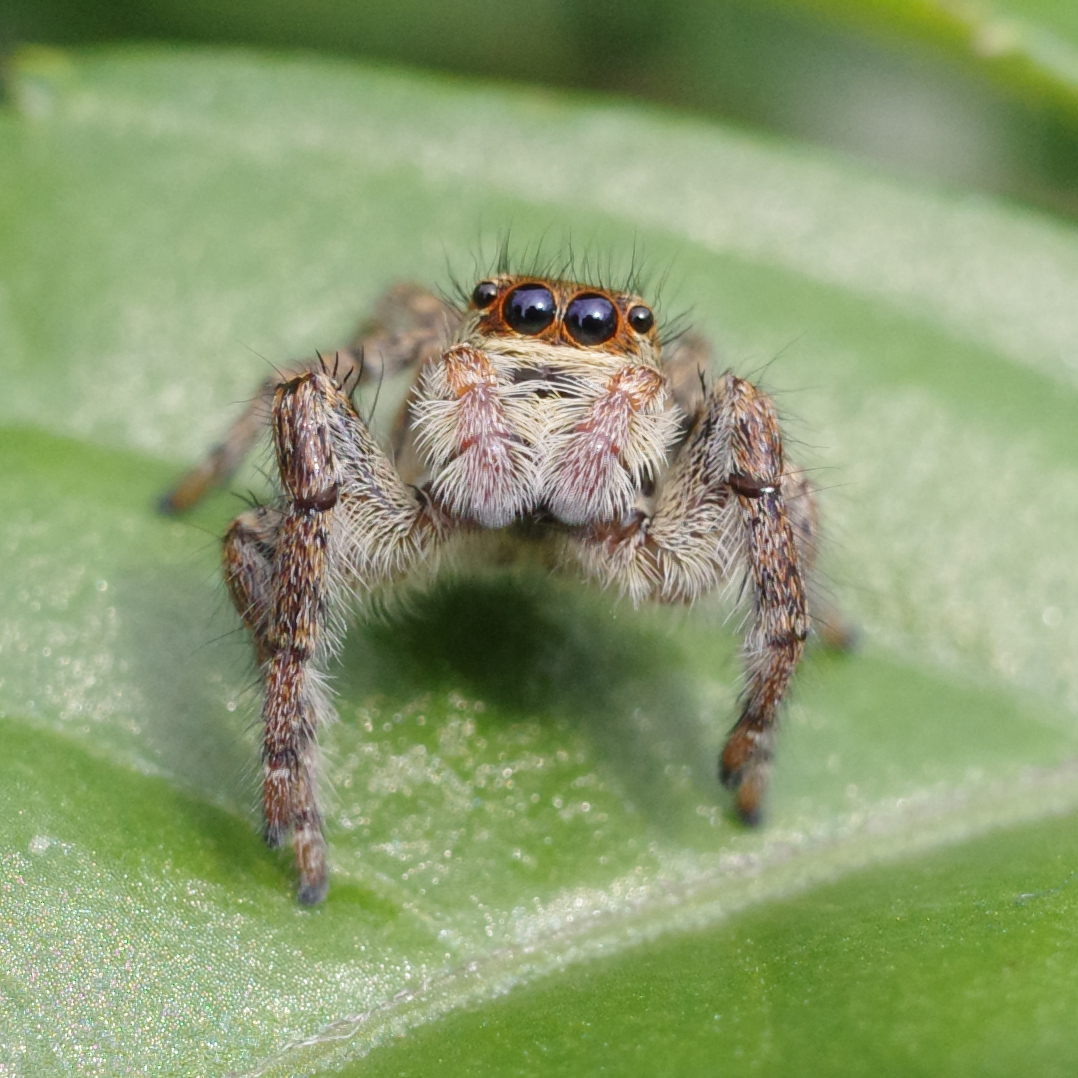
GR III, P mode, ISO800, 1/640sec, F5.6, EV + 1.7, Macro, trimmed
One day, I encountered a rare (maybe) insect that I saw for the first time. The whole body is covered with an oval and translucent shell with its central part shining in gold and is bout 6mm long. It is called “inokozuchikamenokohamushi”- cassida japana. It looks like an elaborate piece of jewelry.
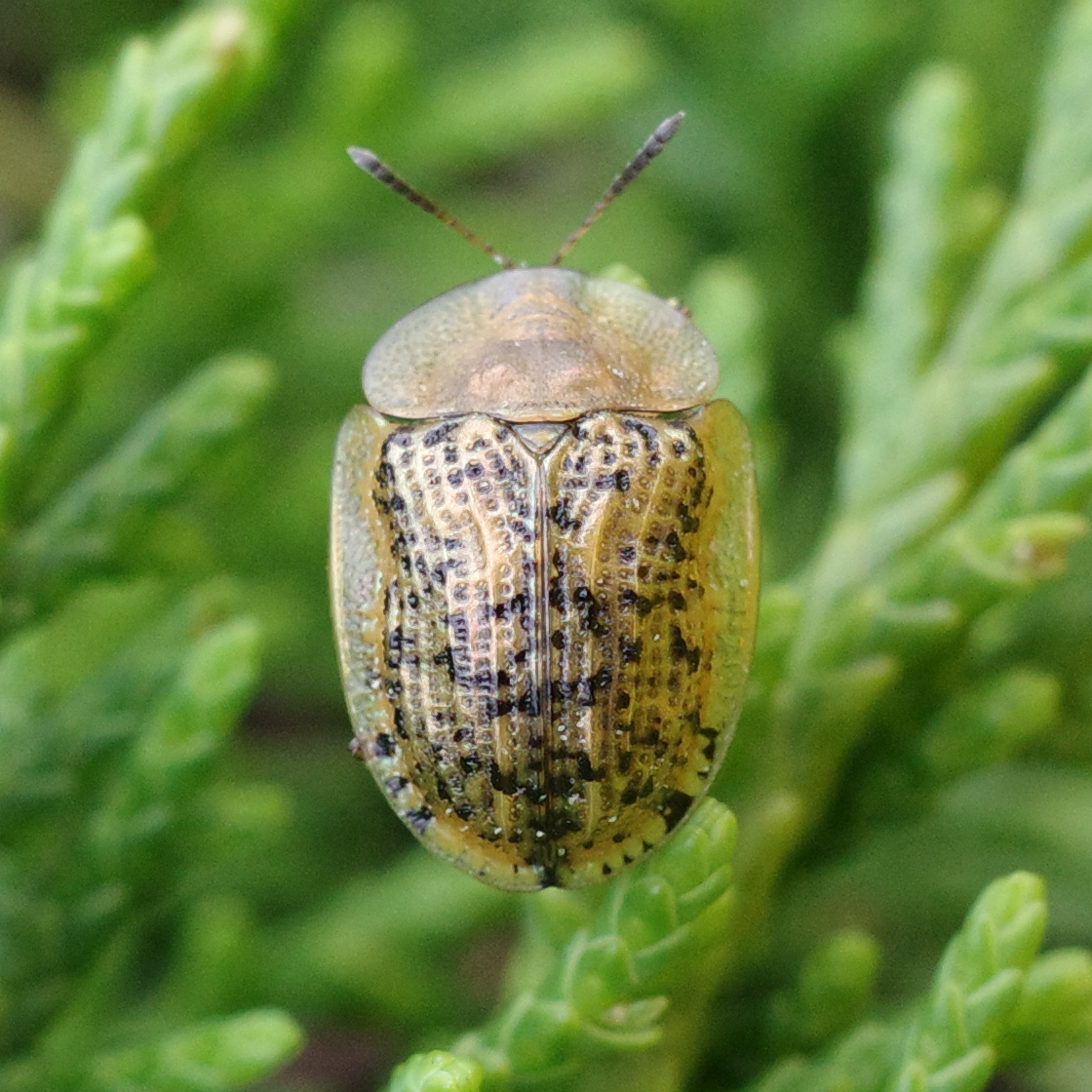
GR III, P mode, ISO800, 1/250sec, F5.6, Macro, Crop 50mm, Trimmed
It’s so wonderful to look at the small world because there are always new discoveries beyond what you see with your naked eye! I will continue to get much out of the insect world.
* * * * * * *
One more thing.
There was a firmware update V1.30 on October 10.
-Crop and Touch AF can be assigned to ADJ mode functions.
-Touch AF can be assigned to the Fn button.
Both cropping and touch AF are frequently used in macro photography. You have more freedom in terms of buttons and customization. Please try them now.
See you soon!
(Minew)














